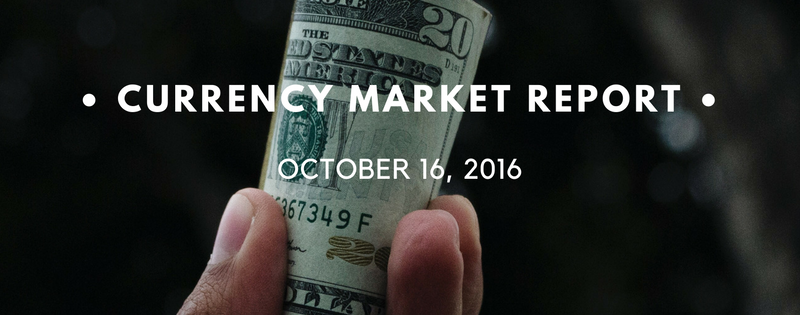Market report – 13 October 2016
GBP
Sterling remains a currency that now trades almost exclusively on headlines concerning the country’s upcoming Brexit from the EU. All eyes are upon the governments right to trigger Article 50 without Parliaments consent.
“The current situation is anything but stable and another slide would feed concern far more than it would help the UK’s competitive position’’ says Kit Juckes at Societe Generale in London. Sterling is still under considerable pressure from institutional money and the outlook is bleak for the UK’s importers.
The Bank of England is unlikely to come to Sterling’s rescue, either. The Pound’s fall can be expected to push Britain’s import prices higher, in turn boosting inflation (inflation has already surpassed 2%yoy according to Pricestats.com.) Monetary Policy Committee member Michael Saunders stated earlier this week that the MPC was likely to ignore it so long as inflation expectation and pay growth remain well contained.
EUR
Data indicated that the Euro-zone’s seasonally adjusted industrial production rebounded by 1.6% on a monthly basis in August, more than market expectations for an advance of 1.5% and following a revised drop of 0.7% in the previous month.
Analysts at Morgan Stanley agree that more losses for Sterling lie ahead and have updated clients with their latest projections for GBP/EUR. 17 airports around the UK have today begun selling GBP/EUR at below parity, with one currency house offering prices as low as €0.88 per pound
USD
The FOMC minutes came and went yesterday with a dose of volatility and a plethora of interpretations, with the Dollar seemingly no better or worse off. There is clearly growing unease around the state of the US economy. Growth remains low and as such, with material labour market slack remaining, the US may be stuck in a low growth rut for some time. Further, the Fed is twisting its language, sounding hawkish on the front end but increasingly dovish on the back.
Market participants are increasingly expecting to see an interest hike before year end and then a sustained period of no movement in 2017. This is likely to be in anticipation of breaking a historical cycle where delays in raising interest rates has instigated another recession
